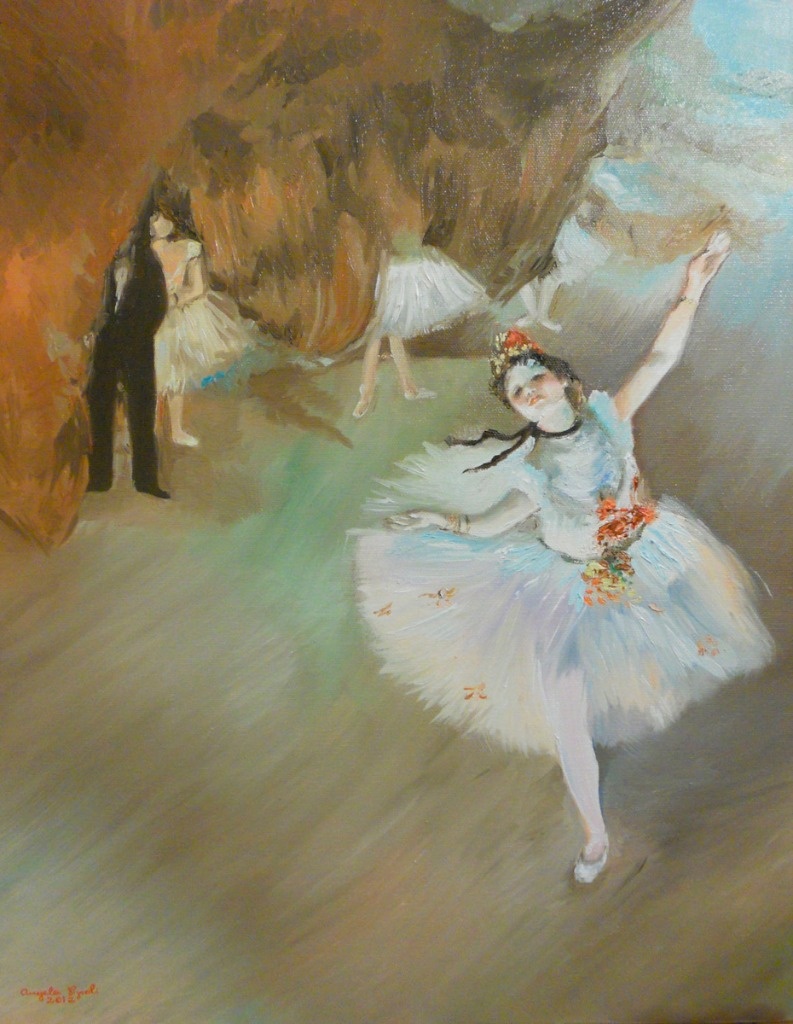Mexico City. All dances, from ballet to contemporary dance, social dance, folk dance, break dance and belly dance, are related to mathematics through music, steps and choreography, said specialist Judith Rivas Ulloa. , from the University of the Basque Country (UPV).
during the conference Dance step to the rhythm of mathematics
organized by the Institute of Mathematics of the National Autonomous University of Mexico (UNAM), the expert explained that the first relationship comes from music, “where the compass is the mathematical way of measuring sounds, which are denoted by fractions: m /n, where m is the number of beats in each measure, and n is the duration of each pulse is not equal to two.
In social dancing, the steps follow the rhythm of the music; For example, in the double step, in the merengue, in the polka, the music is written in a two-quarter time signature, which means that there are two sounds, which will have two steps.
.
On the contrary, the specialist stated, In the waltz the music is in three-quarter time; that is, there are three sounds for each measure and three steps
. While in salsa, tango, foxtrot, the music is in four-quarter time.”
Sound phrases
Rivas Ulloa, member of the Research, Mathematical Analysis and Applications group at the UPV and co-author of several research articles in numerical analysis, spoke about swing, a style of jazz that originated in the United States in the early 1930s, and was conceived to be danced, and whose particularity is that they have a structure of musical phrases of blocks of three plus one, where the first three sound the same, and the fourth is the one that makes the difference, where each of those blocks lasts eight beats that are two measures of four quarters.
About lindy hop, he mentioned, it is a music associated with swing, which was born in African-American communities in Harlem at the end of the 1920s and became popular in 1930, which has basic steps of eight and six beats.
Mathematics is also in the dance through nomenclature; For example, in ballet there are a number of positions such as first, second and third, whose names They use ordinal numerals to cite the placement of hands and feet
.
There are step names, such as entrechat two, entrechat three, entrechat four, to cite these jumps in which the dancer crosses his legs and according to the number of hits he gives with his feet is the name he receives, he added.
The performers draw geometric shapes
There are also fractions, such as “half folds, half flexion, or half point, half point”, as well as geometric figures such as the Round leg, when the dancer draws a semicircle on the floor or in the air with his foot.
In the folk dances of Mexico there are also steps that have numerical names, such as eight vices, seven sins, dance of the three powers, dance of the arches, dance of the six points.
One of the parts of the dance that is most related to mathematics is geometry, since in standard ballroom dances couples move in a circular motion around the floor. Meanwhile, in Latin rhythms, such as salsa and merengue, they do not move throughout the room, but rather remain in an area, where they form a cloud of points. He also mentioned the case of the casino wheel and the square dance, In the latter, four couples arrange themselves in the shape of a square.
Folk dances also stand out for reproducing geometric figures in the movement of their dancers, such as that of the concheros, which is performed in a circular way. Another example is the Dance of the bows, in the Basque Country, in which the dancers form in parallel lines, forming a rectangle.
Regarding the relationship between dances and geometry, other elements are symmetries and isometries. In ballet, symmetry is observed when there are three dancers on one side, and another three on the other side, in a mirror position, or when a couple of performers do the same steps.
Rivas Ulloa maintained that when choreographers design a dance they keep symmetries in mind. He highlighted the case of the Frenchman Sadeck, who has the dance 2 by 2 Mirror dance, in which the dancer Marie Poppins and the choreographer collaborate in a performance, with the help of a mirror, to create endless asymmetrical shapes, in which angles and lines come to life. He also created the Geometrie variable, which consists of several dancers creating sequences of geometric figures on stage.
He highlighted Rudolf Laban, a Hungarian choreographer very interested in the study of movement: body, effort, form, space, who developed a notation system for dance, which is known today as labanotation, based on geometric figures.
Another case is that of Merce Cunningham, of American origin, who is a pioneer in the use of new technologies in art. He used the DanceForms program to create computer choreography.
.
Of Cunningham’s work, he highlighted 16 Dances for soloist and Company of Three, in which he used the chance choreography
which consisted of throwing a coin or dice into the air, and depending on the result he decided what the next step was.
Currently, Judith Rivas pointed out, digital choreographers stand out, such as Web3D Dance, a computer program that creates classical dance choreographies; the Chaographer, who uses the mathematics of chaos to create variations of a work.
#Dancing #related #mathematics #music #steps #Rivas
– 2024-04-30 15:41:13
